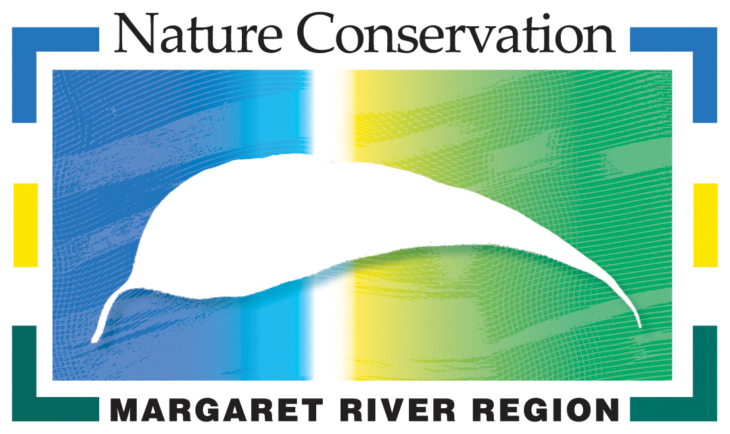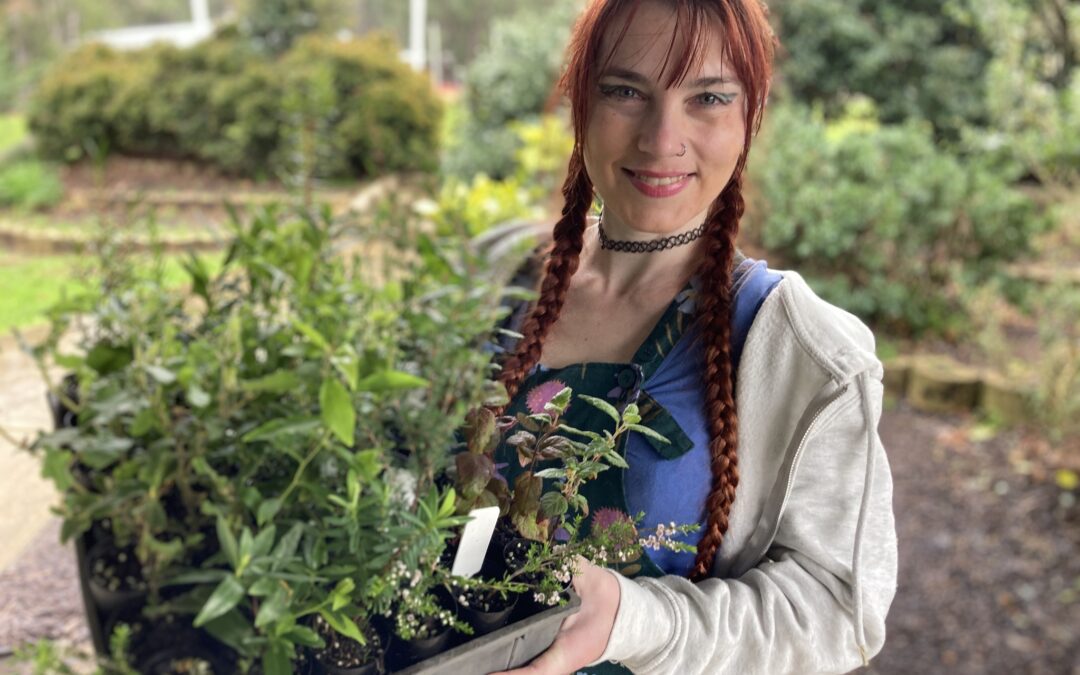Australia is home to more than 2,000 species of native bees — from the bright, blue-banded bee to the tiny stingless varieties — yet many people know surprisingly little about these crucial pollinators.
That changed in Margaret River this week, when a passionate group of community members gathered for a fascinating workshop hosted by Dr Kit Prendergast, one of Australia’s leading native bee scientists and pollination ecologists.
Presented by Nature Conservation Margaret River Region, the event was a deep dive into the incredible world of native bees — their diversity, importance, and the simple steps we can take to help them thrive.
Dr Prendergast explained how native bees have co-evolved with Australia’s flowering plants over millions of years, and are vital to the health of bushland, biodiversity and productive gardens. Their specialised colour vision and exceptional sense of smell — using their antennae, as they don’t have noses — help them forage and pollinate with astonishing precision.
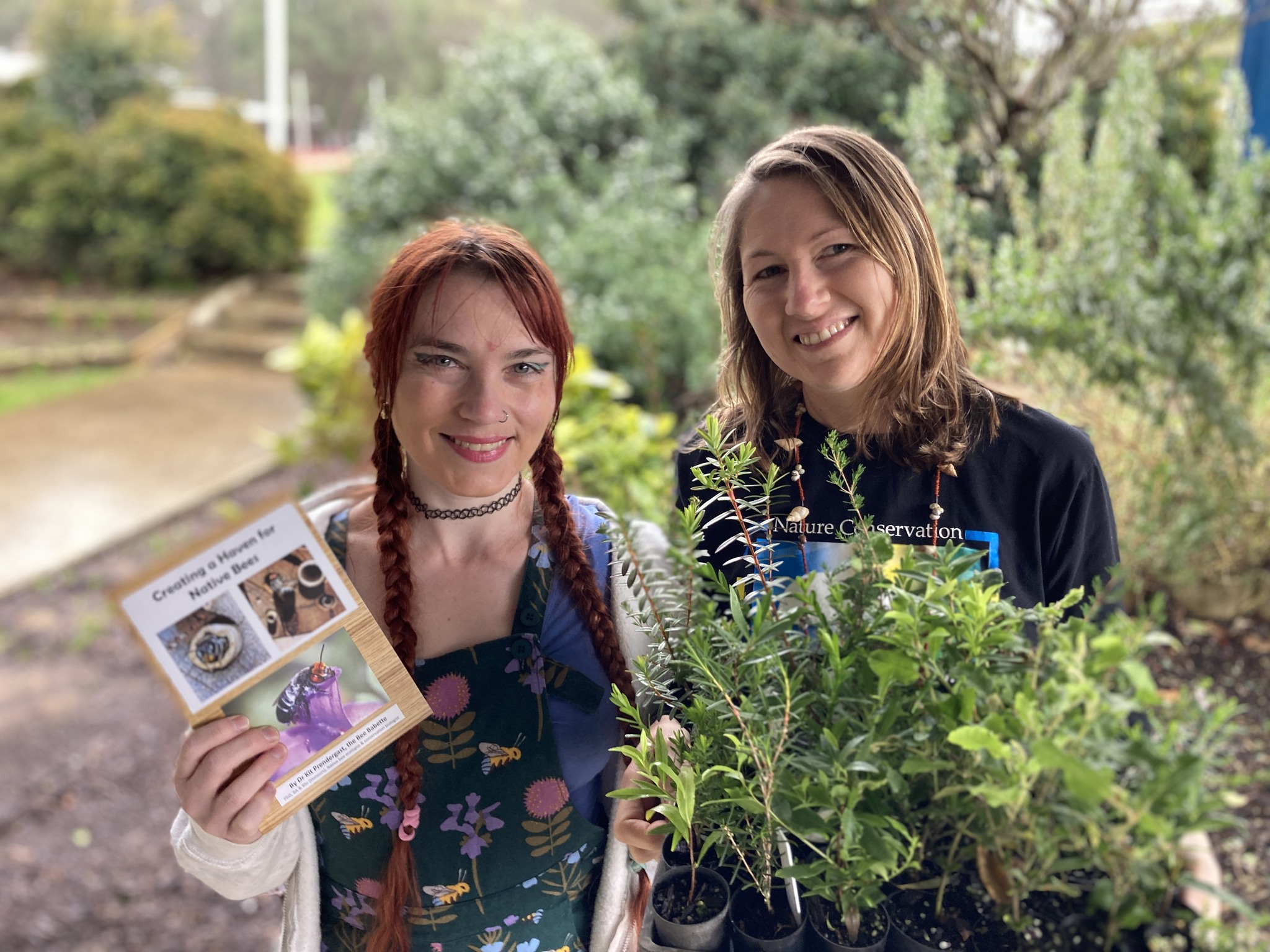
Dr Kit Prendergast with Nature Conservation’s Jodie Passmore
“We all learned how to identify bees and wasps, and explored the major native bee families in WA, where there are around 800 species — many yet to be formally described. Incredibly, 81 native bee species have been recorded visiting marri flowers alone,” says Nature Conservation’s engagement officer Jodie Passmore.
Dr Prendergast said native bees range widely in size from 2mm to 25mm, and some are solitary while others are social. Unlike honey bees — which are a European species gone feral in the wild and can outcompete wildlife for nesting hollows — native bees often nest in bare ground or small cavities. Dr Prendergast emphasised the importance of retaining mature trees as the best natural habitat, supported by well designed “bee hotels” with nesting cavities or holes 3mm–10mm wide, placed head-high in sunny spots.
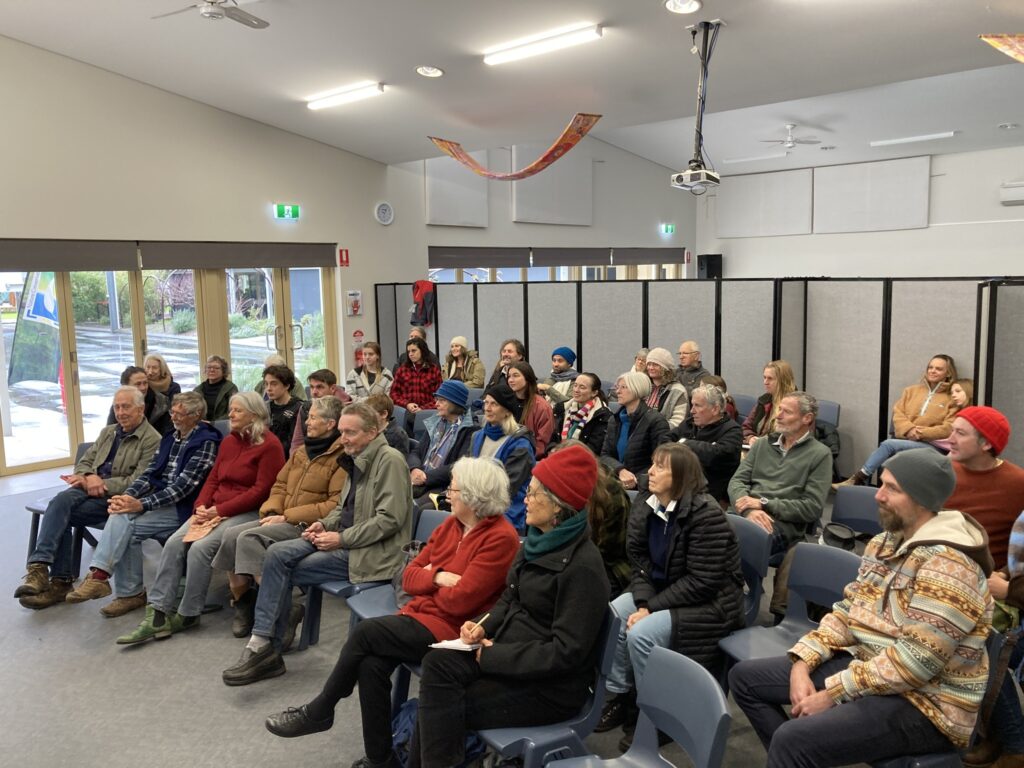
A rapt audience tuned in for the native been workshop
To bring more native bees to your garden or bushland, she suggested:
- Planting native species, especially from the Myrtaceae, Fabaceae and Asteraceae families
- Avoiding pesticides and other chemicals where possible
- Leaving undisturbed soil patches for ground-nesting species
- Supporting bee biodiversity by becoming a citizen scientist, with resources on Kit’s Buzz on Native Bees Facebook page
Dr Prendergast, who has also discovered and named a new species of native bee, brought both deep expertise and an infectious passion for pollinators. With more than 70 peer-reviewed publications and extensive fieldwork across Australia for land care groups, local governments, Traditional Owners, and conservation organisations, her impact is profound.
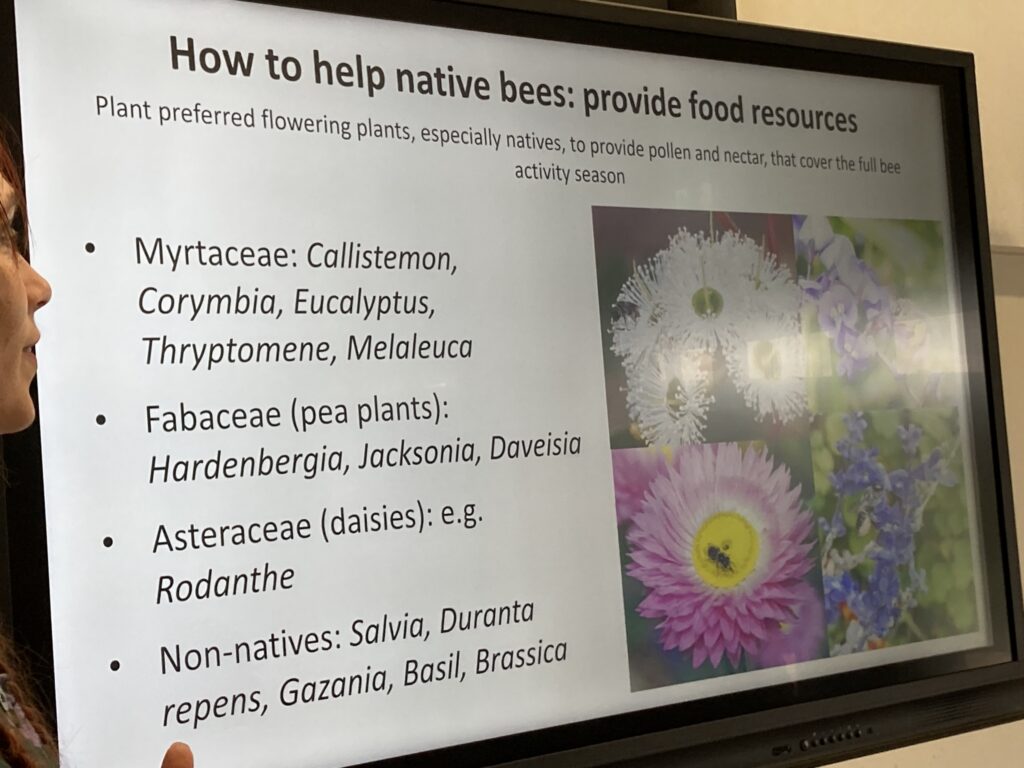
Top tips for attracting native bees
She’s also a dynamic science communicator who has featured on Gardening Australia and was named Curtin University’s Young Alumni Achiever of the Year.
Following the weekend workshop, Dr Prendergast visited Margaret River Montessori School as part of Nature Conservation’s Our Patch youth education program – where she sparked curiosity and wonder among students, planting the seeds for the next generation of bee champions.
To learn more, Dr Prendergast’s book Creating a Haven for Native Bees is a comprehensive, practical guide to turning gardens into buzzing sanctuaries.
The workshop was made possible thanks to support from the Australian Association for Environmental Education.
